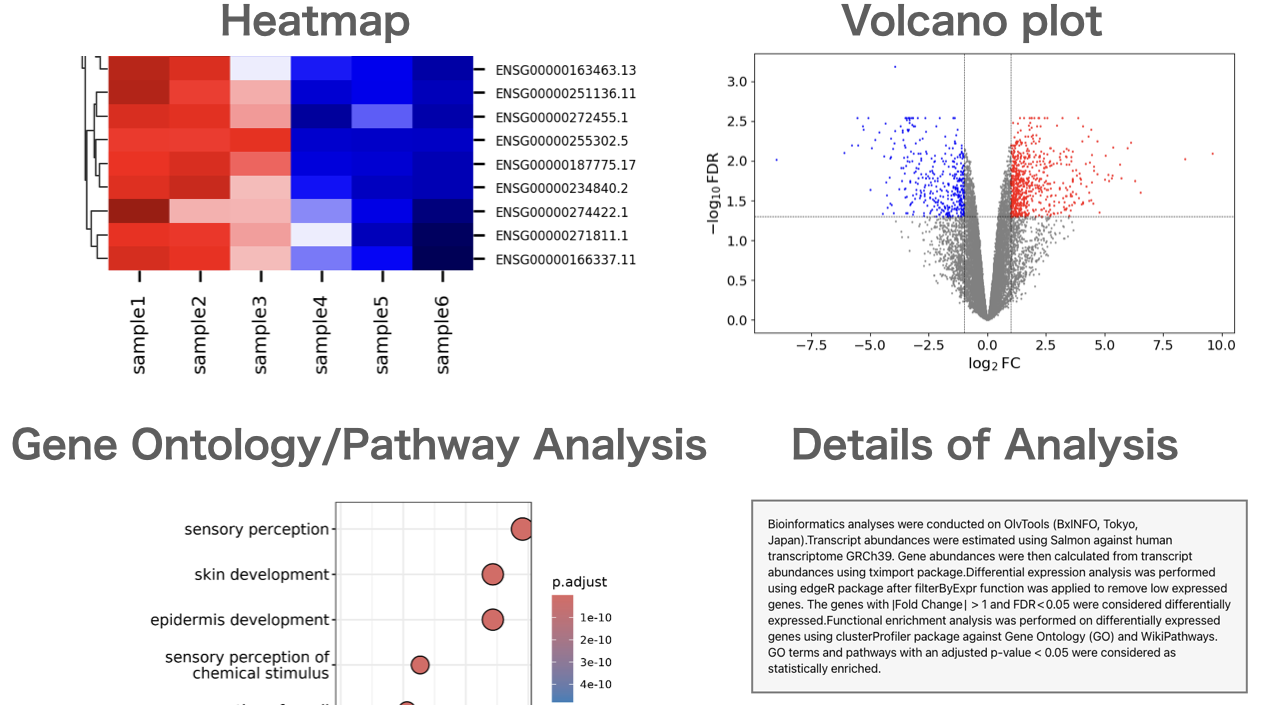Volcano Plots in RNA-Seq: How to Read and Interpret Them
Volcano Plot
A volcano plot is a kind of graph commonly used in the analysis of microarray or RNA-Seq data, named for its visual similarity to a volcano.
This is a graph that plots the ratio of gene expression changes (fold change) and their statistical significance, obtained from comparing gene expression variations between different conditions or groups (DGE analysis). The x-axis represents the ratio of gene expression changes, the y-axis represents the statistical significance of these changes, and each gene is plotted as a single point.
How to Interpret Volcano Plots
Focusing on the x-axis, the right side represents genes with increased expression, while the left side represents genes with decreased expression. The y-axis shows genes with higher statistical significance towards the top.
Genes with a large ratio of expression change and high statistical significance are located in the upper right or upper left of the diagram.
A volcano plot is useful for interpreting gene expression data, but it is recommended to be used alongside other analytical and statistical methods rather than on its own.
Example of Volcano Plot

RNA-Seq Data Analysis Software: Accelerate Your Publication
With our RNA-Seq data analysis software, you won't need to outsource or rely on collaborators. You can start analyzing the data yourself right away, without the need for high-spec computers or knowledge of Linux commands.

Users can perform gene expression quantification, identification of differentially expressed genes, gene ontology(GO) analysis, pathway analysis, as well as drawing volcano plots, MA plots, and heatmaps.